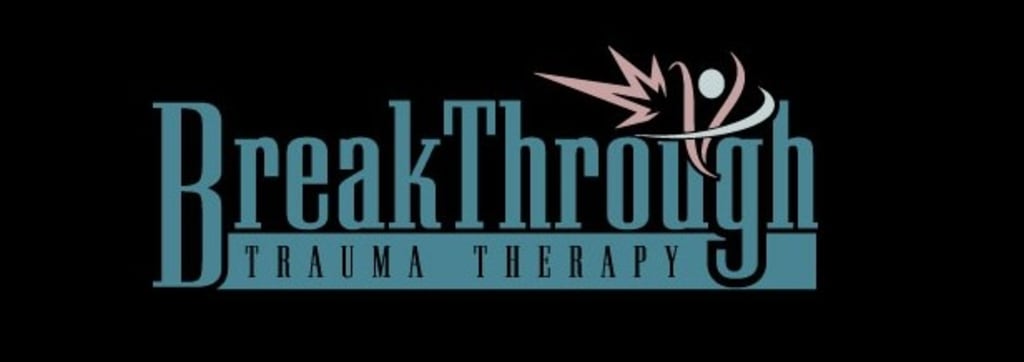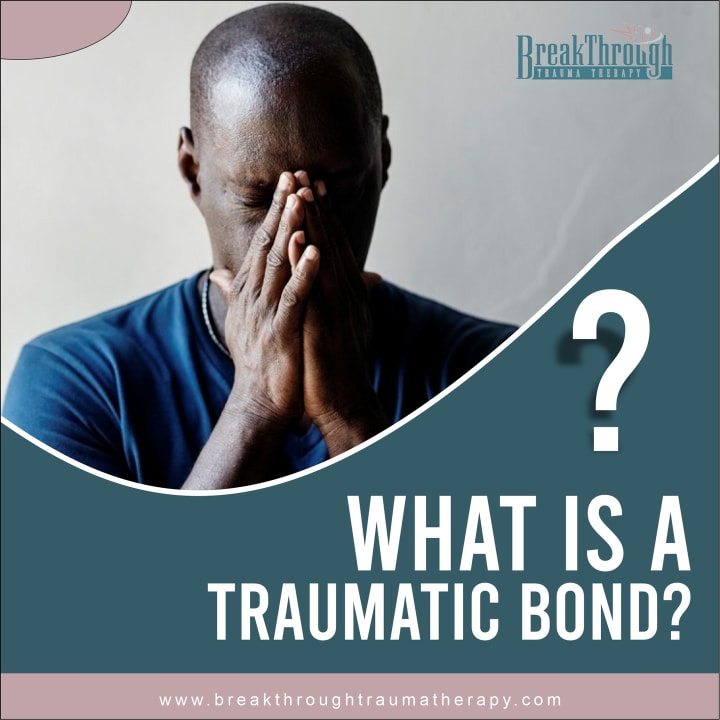Trauma Focused Therapy
Trauma Focused Therapy - Breakthrough Trauma Therapy | Online Therapy Serving Florida

Cognitive processing therapy (CPT) is a cognitive behavioral therapy technique to manage post-traumatic stress disorder (PTSD) symptoms. Distressing and intrusive thoughts, feelings, and experiences, hyperarousal, flashbacks, and nightmares can persist in increasing intensity long after the trauma ends. Such episodes are debilitating for people with PTSD because they relieve the trauma without match control. CPT empowers people to manage and gain insights into their recurring traumatic episodes.
Why CPT is Therapeutic for PTSD
CPT enables you to associate your behavior with your traumatic thoughts and feelings. You get to recount and write the traumatic event using facts. You also have to recognize the impact of the traumatic event on their thoughts, feelings, perceptions, and behavior. The exercise enables you to differentiate intrusive thoughts and emotions. In subsequent therapy sessions, you learn formal processing of the trauma. Going through the event encourages reflection and represses maladaptive behavior like thought avoidance and self-blaming. In each session, you go through the traumatic event addressing issues, evaluating outcomes, and modifying false beliefs. Each sensation occurs in a safe environment. The therapist guides you to control the situation and respond constructively.
The Benefits of CPT
Therapy enables you to
● Gain adaptive strategies to combat intrusive thoughts, hyperarousal, nightmares, and flashbacks.
● Learn habits, skills, and techniques to control fearful thoughts and feelings and the associated behavior
● Take control of your thoughts, feelings, and traumatic experience.

Written Exposure Therapy
Written exposure therapy (WET) is a PTSD psychotherapeutic intervention that can reduce symptoms in five sessions. The approach, also known as written narrative exposure therapy, is especially beneficial for individuals with complex and multiple trauma. Through the intervention, the patient relives their traumatic experience by controlling the narrative and the outcome.
PTSD and Memory
PTSD interferes with a person's recollection of events. The error occurs in your brain during the actual traumatic experience. PTSD is the product of your brain failing to assign the correct meaning, emotion, and interpretation of a traumatic event. It stores false information and leaves things hanging and unresolved.
The brain launches a response as though the event was still happening every time sensations activate the memory part of the brain to retrieve this information. It then stores the recurring episodes and reinforces your fears concerning the false reality.
The reinforcement also overstimulates your brain, increasing its propensity to interpret everything as that traumatic event. It acts on false signals or actively works to extend your body’s natural defense system called the stress response or anxiety or the fight or flight response, even though there is no real danger.
How WET works to Overcome PTSD
The primary objective of WET is to help you remember the trauma using facts. Brain errors behind the post-traumatic experiences lead to maladaptive behavior like self-blaming, avoidance, substance abuse, intense anger and aggression, and depression. WET fosters thought and emotional understanding.
In each session, you will focus on the trauma and its impact on your thoughts, emotions, and actions. The therapist also guides you in identifying faulty thinking patterns, feelings, and the associated behavior. Thus, you get to realign your thoughts and feelings to the actual experience to find a lasting mental resolution.
How WET Sessions Work There are only five therapeutic sessions. You will spend the first hour learning about therapy, trauma, and PTSD in the first session. The therapist then uses the next 30 minutes for the written trauma narration segment. You will only concentrate on the trauma during this session. The approach contextualizes your cognitive, affective, and sensory memories, rectifying the fragments and errors created by the brain during the actual traumatic event. The counselor guides the process, provides instructions, and observes your response to the exercise in the first writing session. In the next subsequent writing sessions, you will go through the process unsupervised. The provider will provide the instruction before the exercise and talk to you when you finish writing. Each writing session takes 30 minutes. As therapy progresses, you learn to manage your thoughts and feelings concerning the traumatic event.
Benefits of WET
● It is not time-consuming – a few short sessions yield significant results.
● You can find healing in multiple traumatic events in your life span.
● You regain the power over traumatic events by controlling the narrative.
● The technique enables you to re-capture your self-worth and acknowledge your experience.
● WET encourages introspection and enhances your understanding of behavior, thinking patterns, perception, and emotional cycles.

Prolonged Exposure Therapy
Trauma, phobias, and intense fears can severely interfere with living. They evoke severe anxiety and can be a source of depression. Unfortunately, every recurring incident of past traumatic events, phobias, and fears worsen your mental and physical health. The same applies to repressing feelings and thoughts and avoiding the traumatic experience. Psychotherapy can help you manage and overcome this extreme response. Counseling psychologists use Cognitive Behavioral Therapy to help people confront their fears. One technique used in this form of therapy is prolonged exposure.
What is Prolonged Exposure?
Prolonged exposure is a therapeutic technique where an individual gradually encounters their traumatic experiences, feelings, and fears to ease anxiety and post-traumatic stress disorder (PTSD) symptoms. Your fears, worries, and traumatic experiences stimulate your stress response, commonly known as anxiety or the fight or flight response. Anxiety evokes an intense physiological response that leaves you shuttered, disoriented, and defeated. When you are anxious, you experience heart palpitations, hyperventilation, muscular spasms, inattention, and an increased sense of danger or feelings of doom. Your reaction to danger or threats is a normal physiological reaction. It helps your body defend itself from trouble.
The body
● Increases your heartbeat, breathing, and blood flow rate to get oxygen into your muscles and brain to generate energy for fight or flight
● Heightens your attention toward the threat or danger, making you lose focus on everything else
● It also impedes other bodily functions like the immune and digestive systems to keep you from dispensing your energy to other metabolic processes.
The stress response is excellent when you are in actual danger. It can keep you from burning your finger or escaping oncoming traffic. However, the threat is unreal in anxiety disorders like PTSD, phobias, or extreme fears. Through prolonged exposure, your body learns to interpret disruptive, intrusive thoughts, feelings, and experiences as non-threats. The technique disempowers the trauma, rendering it harmless to the patient.
How Prolonged Exposure Works
After the first assessment counseling session, the psychologist curates your experiences in varying intensities. Each session gets timed, and your response gets recorded and corrected with other cognitive behavioral therapy techniques. Sessions take between 60 to 120 minutes and occur within three months. Overall, you get about 12 sessions, translating to a session per week. You then get to use skills learned in cognitive behavioral therapy to develop resilience in every session. Each exposure strengthens you to overcome the real threat when it presents itself. The exposure can be imaginary, where the patient describes their experience as the therapist guides the process. It can also be an assignment outside the therapist's office. The environment is always safe for the patient.
Benefits of Prolonged Exposure
● The exposure session takes place in a controlled environment where you are safe. Safety awareness empowers you to face your fears.
● You get to apply thought and behavioral management techniques taught in therapy in real-time. Practice makes perfect. Horning those skills prepares you for the actual scenario.
● You get to overcome your fears, phobias, and traumatic experiences.
● There are no side effects from medication or body intrusion from brain-stimulating equipment from the prolonged exposure technique.
Get in Touch:
7750 Okeechobee Blvd, West Palm Beach, FL 33411
Port Saint Lucie
10570 S US Highway 1, Port Saint Lucie, FL 34952
Orlando
417 Knight Land Court Orlando Florida 32824
Tampa Bay
2915 Parandor Place, Sarasota FL 34235
About the Creator
Enjoyed the story? Support the Creator.
Subscribe for free to receive all their stories in your feed. You could also pledge your support or give them a one-off tip, letting them know you appreciate their work.





Comments
There are no comments for this story
Be the first to respond and start the conversation.